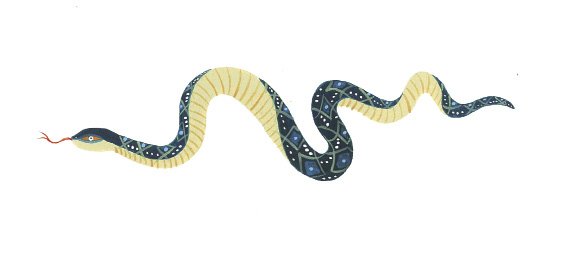Nearly anyone who has a pet has probably wondered: what is my dog thinking? What is my cat trying to communicate? Do animals think the way I imagine them to, or am I simply imposing my humanness on my pet? In short—how are animals and humans different, or the same?
The “human-animal binary” was the topic of the October 17 lecture by Professor Beth Berkowitz, who holds the Ingeborg Rennert Chair of Judaic Studies. The lecture, sponsored by the Barnard Center for Research on Women (BCRW), was part of the Ingeborg, Tamara, and Yonina Rennert Women in Judaism Forum. It was the series’ first talk since Berkowitz became the tenured chair.

Berkowitz began her talk, “Frontiers in Jewish Studies: The Clever Ox, the Escaping Elephant, and Other Talmudic Animals,” by posing the question of “how animal studies can cross-fertilize with Jewish studies” and rabbinics. How can insights from animal studies be brought to bear on Jewish texts, and, conversely, how can we find a place for Jewish traditions about animals within the framework of animal studies?
Animal studies is a relatively new, still-evolving field of research that dissects notions of animal and human natures from a range of perspectives. The subject, explained Berkowitz, “was fueled by science and new scientific research, which claims that other species have cognition and even culture comparable to that of human beings.”
Berkowitz then went on to examine a Mishnah, or second-century Jewish legal text, that contains a section laying out a framework for holding an owner liable should his animal—domestic or wild—cause injury or damage. An expert on classical rabbinic literature from around the second through sixth centuries C.E., Berkowitz deemed the passage hard to understand, calling it unusually cryptic even for rabbinic writings. “Here is my argument,” she went on. “I want to claim that the reason this Mishnah is so difficult to understand is that it is doing something new. It’s crafting a discourse about animal nature.”
Berkowitz then dissected the passage by weaving through sources both Jewish and non-Jewish. The passage reads: …An animal is not attested as a source of damage with respect to: (1) goring, (2) butting, (3) biting, (4) squatting, or (5) kicking. (1) The Tooth is attested with respect to eating what is appropriate to it. (2) The Foot is attested with respect to smashing as it walks....Berkowitz looked at similar words in Exodus and other rabbinic literature to explore various interpretations of an “attested” animal, or one that is expected to be destructive and would thus cause an owner greater liability.
She then examined the line “The wolf, the lion, the bear, the leopard, the panther, and the serpent: These are attested. .... When they are domesticated they are not attested. And the serpent is always attested...” from the animal studies perspective. She explored the notion that any animal species can be defined as dangerous and cited Vanderbilt University humanities professor Colin Dayan, who has said, “the classification of animals as dangerous is a highly arbitrary legislative act.” Finally, quoting classicist Robert Lamberton of Washington University in St. Louis, Berkowitz placed the Mishnah into historical context: “‘In Plutarch’s time, [about the same time, generally, as the Mishnah], the debate about the similarity between animal and human souls was broadening into a widespread concern with the proper relations between humans and animals.’”
What Berkowitz suggested is that this text “is participating—whether it knows it or not—in this widespread cultural conversation about the character of other animal species and how it relates to the character of the human species...This Mishnah engages what I believe to be some central concerns of animal studies.”
Just this one short passage points to an as-yet-unexplored relationship between Judaic and animal studies, Berkowitz explained later in an interview. This link is the latest focus of Berkowitz’s scholarship, and she is working on a book that ties Talmudic discussions to animal studies. She says it fits well with the notion of “otherness” that Berkowitz explores in her scholarship. “I’m interested in themes of difference and the construction of identity, and species difference speaks to that same interest,” she explains.
Drawing on animal studies also helps Berkowitz better understand rabbinic literature. “How did the rabbis think animals think and feel, and how much do they try to get inside the subjective experience of other species?”
Exploring animals also calls to Berkowitz personally. She has been a vegetarian since she was 12; it’s part of her “longstanding identity.” Along with her husband and two daughters, she also has a golden retriever who is very much part of the family. The subject, she says, “gives me an interesting perspective on myself as an animal. We don’t usually think of ourselves as animals. I think our tendency is to think animals are qualitatively different, and I find it interesting and comforting to find we’re not...different than everything else in the world.”

Berkowitz will be assuming leadership of the Ingeborg, Tamara, and Yonina Rennert Women in Judaism Forum, which brings to Barnard scholars, artists, and activists whose work promotes understanding of the complex roles of women in Judaism. Said BCRW director Janet Jakobsen, “The past of this forum has been exemplary, and I think with Beth’s leadership it will be truly wonderful and exciting in the years to come.” To see a video of the entire lecture, visit bcrw.barnard.edu.
